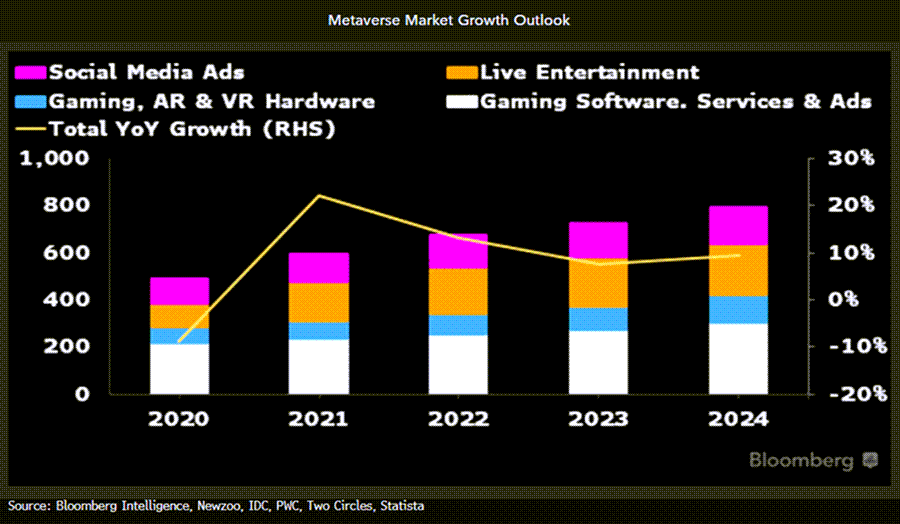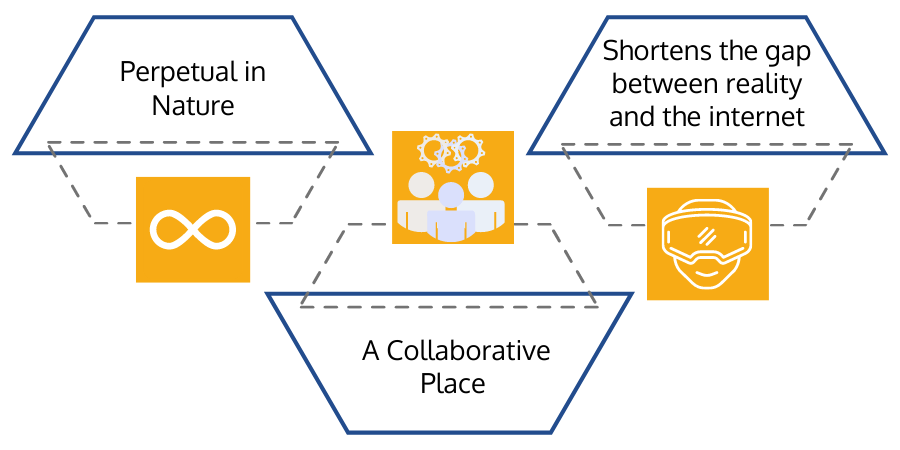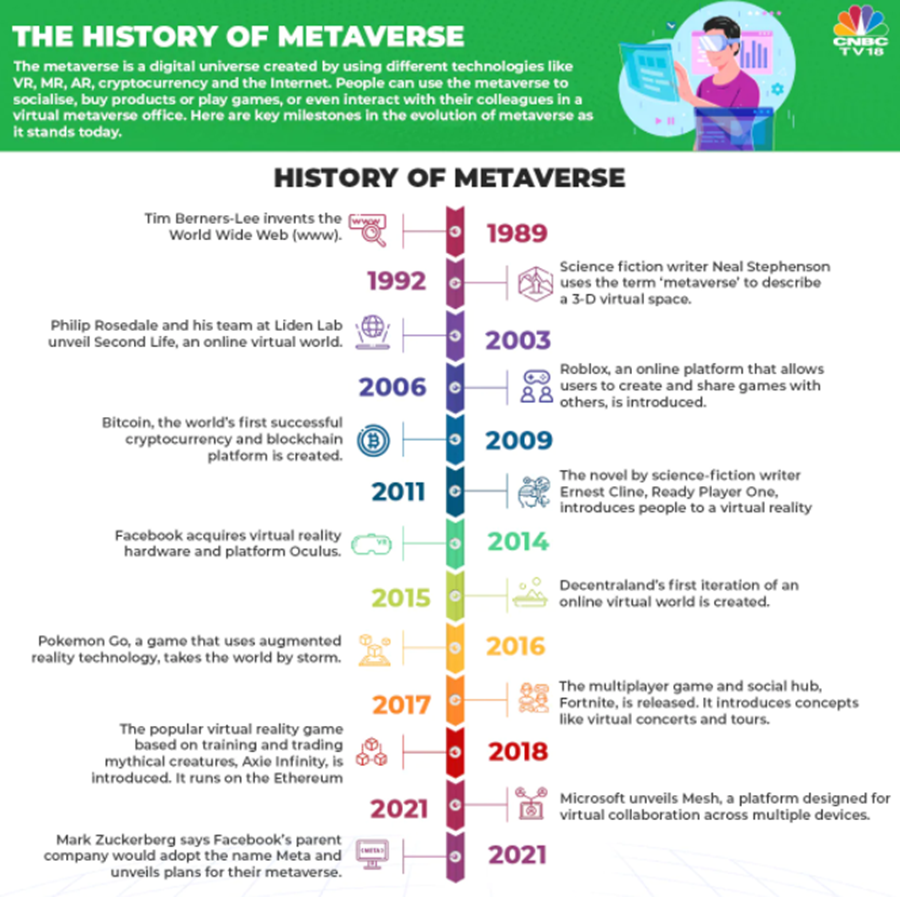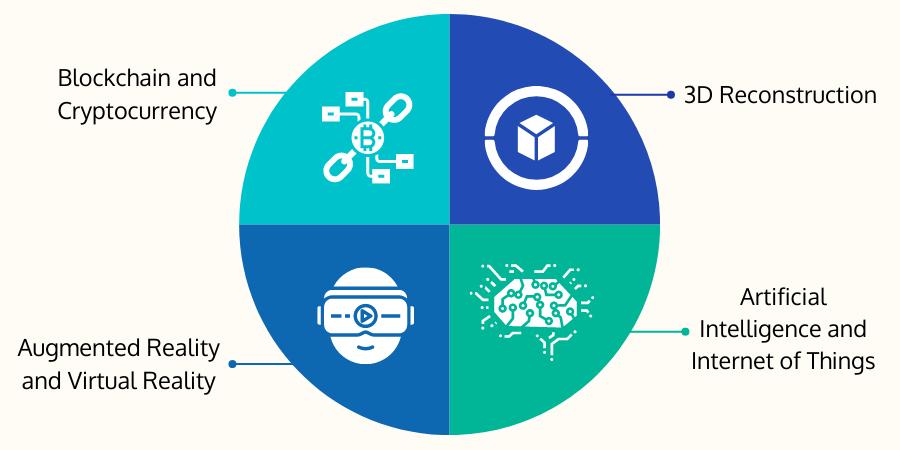
“Metaverse is the next large technology platform.”
The biggest rivalries, including Microsoft, Nvidia, and Facebook, have introduced primary applications providing organizations access to the metaverse landscape. Many startups are also developing this type of technology.
According to a report provided by Bloomberg, the global metaverse revenue can reach $800 billion in 2024, which is $500 billion in 2020. In addition, the forefront market for online gamers and gaming accessories can exceed $400 billion in 2024.

This article discusses what the metaverse is, what technologies empower it along with the primary challenges the metaverse can face.
What is Metaverse?
Metaverse is a 3D mixed reality environment integrating the real world with the digital world. In the digital age, the metaverse is the "next great thing" towards social connectivity. While the internet is unable to depict the entire bandwidth of human connection and presence, these are elementary qualities of the metaverse.

Following are the characteristics of the metaverse:
- Being perpetual in nature, metaverse continues to exist ever after closing the app or logout.
- A metaverse is a collaborative place where users can watch the same thing and work collectively.
- Adding a new 3D layer to the internet with augmented reality, metaverse shortens the gap between real life and the internet.
The metaverse cannot be ruled by a single person or corporation. Being a subset of the internet, metaverse incorporates virtual reality, augmented reality, blockchain, and cryptocurrency to create a virtual world that everyone can participate in.

When Was the Metaverse First Introduced?
"Metaverse" is a combination of the words "meta-" and "verse." The prefix "meta" is of Greek origin, meaning "beyond," and "verse" is derived from the term "universe."
Neal Stephenson's dystopian novel Snow Crash, published in 1992, was the first to employ the word. The metaverse is depicted in the novel as the next step in the evolution of the internet - a form of virtual reality in which any virtual contact can have a direct impact on the real world. The novel tells what the metaverse is all about. It's a virtual space that includes virtual avatars, digital social interactions, and games, among other things.
Snow Crash presents how the metaverse in the story influences the protagonist's real-world events. For example, a game that drives people insane whose brains are connected to the virtual world.
In general, the metaverse is a virtual world where people will be able to do everything they can in real life.

What are the Technologies Associated with Metaverse?
Following are the ever-trending technologies to add benefits in the metaverse;
1. Blockchain and Cryptocurrency
Initially, cryptocurrency struggled to establish itself as a real-world economic application; it is not a concern anymore. Digital currencies are the instruments to propel the purchase and sale of goods in the virtual world.
Non-fungible tokens (NFTs) are used for ownership and authenticity. Blockchain will be suitable to legitimize storage, creditability, and transfer of crypto once the metaverse will live more prominently.
Blockchains have the properties of interoperability, immutability, and scalability are required for virtual reality technologies. These work as technological pillars establishing digital asset custodianship without a doubt.
2. Augmented Reality and Virtual Reality
AR and VR are unprecedented pillars of metaverse environments. AR deals with real and virtual environments, real-time interaction, and 3D virtualization of objects. AR apps can be used on any camera-enabled device, and no need for ad-hoc wearables for users to experience the AR services.
On the other hand, VR is the simulated experience of the artificial and digital world. It gives a sensory experience to the physical reality of users. VR demands additional equipment such as head-mounted displays or multimodal projection screens.
Coupling AR and VR yields Extended Reality (XR) that individuals can experience in the metaverse world.
3. Artificial Intelligence and Internet of Things
AI is implemented in the metaverse by virtue of non-playing characters (NPCs). NPCs are incorporated into games to enable interactive experiences in virtual environments. The metaverse AI and live 3D settings are also accounted for to augment the experience. Developers also use AI for image classification, facial recognition, and high-resolution-based computer imaging to add realistic effects in graphics.
Real-time simulations using real-time data, IoT involves multiple devices with a live network to accumulate real-time data. IoT incorporating AI, ML, and 5G can offer seamless data integration with unlimited virtual interactions.
4. 3D Reconstruction
COVID-19 pandemic has accelerated the vital use of this technology. For instance, visitors in the real estate industry are restricted to travel due to pandemic outbreaks; salespersons are using metaverse to reconstruct virtual avatars of living rooms and give visitors digital property tours.The metaverse becomes more dynamic and realistic using 3D reconstruction. In addition, spatial data and 4K HD photography are immensely deployed to create a digital replica of our real world.
Some Challenges
Every technology has two faces-opportunities and consequences. In the case of the metaverse, major concerns are privacy and security.
Concerning security, metaverse connects real-life with virtual and augmented worlds. Where AR and VR are limited to headsets and silicon chips, real-life equipment and systems can be affected by metaverse potentially. For instance, hackers can steal confidential information(theft of personal data, stalking, unauthorized access to restricted areas, etc.) from these systems for their own purposes.
Privacy includes concerns for AR devices. Wearables can have camera capabilities that reveal the user’s correct location and relevant details. Metaverse can identify individual users as they use the unique identifiable connections. It implies headsets can be used to track and locate users without their consent.
Bottom Line
The Metaverse is the next step in the internet's evolution. Metaverse is much more than a digital platform for internet gaming. Blockchain, virtual reality, augmented reality, online gaming, and digital assets connect the digital world. Both corporations and individuals can benefit from the metaverse.














 Batoi Corporate Office
Batoi Corporate Office